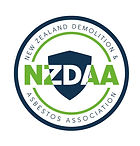Jon Drumm Director of member company Hazmat has shared his experiences of a small company gaining their OHSAS 18001:2007 and going from a Class B Company to Class A in 2019.
So why did HazMat decide to get their Class A?
On a number of jobs where we quoted the class B works, we worked in with a Class A company for removal of class A products; however it was getting too hard to provide a cohesive solution for the client and left our company open to more risk under the PCBU regime. We already had on board some experienced Class A Removalists / Supervisors to assist us in our Class B works, and they gave us the confidence in their expertise and experience to consider getting our class A.
What was the process?
We engaged with Sean Banayan from Kaizen Goal (He was outstanding) to help us build our Occupational Health and Safety Management System (OHSMS) and engaged with Telarc to perform the audit on the said system. I especially enjoyed time spent with out Telarc Auditor whom was quick to constructively challenge us on some of our processes.
Moulding the system around how we run our business and personnel took several months to get right. This was followed by a couple of months of actually running our business to the systems/processes took some real discipline. This however, really set us up to have a well-run oiled machine. We have since expanded this process driven documentation across our entire business. From there we had a couple of two day visits from Telarc checking our workplace , our system and a worksite visit where we had to simulate a Class A removal.
How long was the process?
Overall the process took us six months to gain accreditation as you are needing to book time many months in advance for consultant and Audit time. I believe had consultants not been as busy, it could have probably taken 4 months or possibly quicker if you had internal resource.
Speaking of resource, did you need extra resource in your team to get your class A?
I recommend you seriously consider it. In our case, no, we were able to do this within our own management team. Moving forward, as our workload, team and number of jobs continue to grow, as too has our documentation/inhouse audits/reporting and hence we have now (6 months later brought on board a specialist Health and Safety Officer to aid in our compliance. We also had some substantial costs in buying Class A Decontamination gear + associated equipment (Additional Negative Airs, Water management systems, Omniguards, etc) and spent a lot to put in place a two shower system into our decontamination units for our staff (used in Australia) that can be transported and erected quickly and easily on site.
So what was the cost?
Overall I think we have probably invested close to $100,000 with in-house training, consultant time, equipment and of course internal and external training. I think potentially knowing what I know now, this could be trimmed a lot had we partnered with another asbestos company or had a “go to” in the industry to help give us pointers and coach us through the process of buying equipment etc. I found worksafes ACOP pretty sparse on specific detail in this regard (must/should/could) and we relied heavily on our experienced staff and ARENZ whom helped a lot in this regard. Be good if the NZDAA had some “go to” resource in this regard also.
What benefit have you seen from getting your Class A?
We have now been able to perform complete Demolition across Class A and B works and we can tackle all manner of work. This means we can pick and choose specific projects. In addition, I feel like we have more control, a process for minimising risk and our staff have actually loved the continual Opportunity For Improvements (OFI). Especially when they see we have listened and implemented their suggested improvements/changes which makes things better and safer for all.
What would you say to a company considering going from Class B to Class A?
If you are thinking about it.…plan well ahead. You must have some very sound management knowledge and experience in Class A removal works in-house, and the different types of controls. Also deep pockets, deep pockets will help you.
I am aware that we as an industry should be getting more clarity/refinement from NZDAA/Worksafe on what constitutes Class A versus Class B products and removal types in the near future; hence, if you have the $, expertise as well as the desire to scale up operations and are keen on a steep learning curve, then consider it.
We would not have done it, had we not already had several experienced Class A workers and Supervisors performing our Class B works.
Jon has said that he would be happy to provide further advice to any NZDAA member considering going from B to A.
